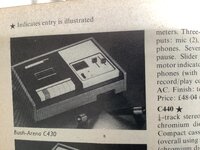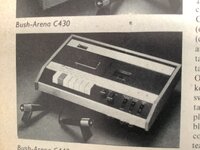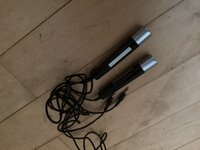kip4
Well-known member
While looking for other stuff in the loft I found a pair of old tape machine mics. They have to be from the old bush cassette machine as I dont recall anyone of the other tape machines having mics that I owned.
I plugged it in the interface and nearly had to crank the gain to get a signal at all.
Switched to high z input mode and bang much better with the gain at 9pm.
Id like to experiment with them for a couple of hours and run some signal through them to see what they will shine with and what sounds awful.
Any suggestion on what I should record , how, also interested If you have tried this or similar experiments.
Thanks guy and gals.
I plugged it in the interface and nearly had to crank the gain to get a signal at all.
Switched to high z input mode and bang much better with the gain at 9pm.
Id like to experiment with them for a couple of hours and run some signal through them to see what they will shine with and what sounds awful.
Any suggestion on what I should record , how, also interested If you have tried this or similar experiments.
Thanks guy and gals.





